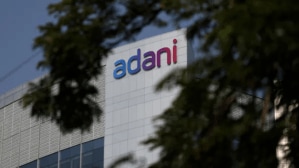BJP’s problem of plenty: A Budget promise to ally Andhra lands it in a hole in own Odisha
Union Budget promises funds, help to complete Polavaram irrigation project in Andhra. BJD launches campaign pointing out its adverse impact in Odisha
 Narendra Modi (PTI Photo); Chandrababu Naidu (Express Photo)
Narendra Modi (PTI Photo); Chandrababu Naidu (Express Photo)THE BJD has got an opening to attack the BJP following the Centre’s announcement in the Union Budget that it would extend funds and the help needed for completion of the Polavaram irrigation project in Andhra Pradesh.
Odisha has long been opposed to the multipurpose project in its current design, saying it would result in submersion of a large portion of Malkangiri district.
The BJP government’s support for it gives an ideal opportunity to the BJD to resuscitate its image as that of a state-bred party for whom Odisha’s interests come first above all – while projecting the BJP as “anti-Odisha” and “anti-tribal”.
Besides being the ruling party now in both Odisha and at the Centre, the BJP is part of the ruling alliance in Andhra along with the TDP.
On Thursday, in its first such political programme in Odisha after the Assembly and Lok Sabha poll loss, the BJD sent a delegation to areas in Malkangiri which are expected to be submerged because of the Polavaram project.
State government sources claim that, in its current design, the project once finished would submerge at least 25 villages in Motu tehsil and inundate around 7,656 hectares of agriculture and forest land in Malkangiri district. Officials said that as of now, around 75% of the project is complete.
Presenting the Budget, Union Finance Minister Nirmala Sitharaman said that the Centre was fully committed to the early completion of the Polavaram irrigation project, which Andhra Pradesh sees as a lifeline for its farmers.
What adds ammo to the BJD’s attack is that other Opposition parties too have accused the Budget of being biased towards Andhra as well as Bihar, with the BJP dependent on its ruling allies there, the TDP and JD(U), to have a majority in the Lok Sabha.
Senior BJD leader Atanu Sabyasachhi Nayak, who was part of the team that visited Malkangiri, said no proper study was conducted on the Polavaram project’s possible impact in Odisha. “We visited many villages likely to be affected. People are worried because of the Centre’s decision to rush the completion of the project,” Nayak told reporters.
On Wednesday, BJD Rajya Sabha MP Sulata Deo raised the matter in the House. “Around 162 villages, including many tribal villages, will be submerged due to the implementation of the project. Why is the BJP that shouted so much about tribal welfare silent now? Odisha will continue to fight against the injustice,” said Deo.
The Polavaram project has been in the works for a long time now. While environmental clearance was granted to it in 2005, the Centre notified it as a national project only in May 2014.
The BJD has raised objections to the project since the start, often hitting the streets in protest. In 2007, the Odisha government led by it filed a petition in the Supreme Court against the project, which remains subjudice.
However, since the Narendra Modi-led BJP came to power in 2014 at the Centre, Odisha’s objections have remained confined to letter-writing, with BJD chief Naveen Patnaik, in his capacity as Chief Minister, writing multiple times to the Prime Minister urging that the Centre stop the project’s construction.
In June 2018, Patnaik wrote to Modi saying that the construction of the Polavaram project was a violation of the Godavari Water Dispute Tribunal, and the design had not correctly assessed the backwater extent in Malkangiri.
The ruling BJP realises the bind it finds itself in. Odisha CM Mohan Charan Majhi, who was in Delhi recently for the NITI Aayog meeting, said he met his Andhra Pradesh counterpart Chandrababu Naidu after the event, and proposed officer-level and CM-level meetings to discuss the concerns of the state and to find an amicable solution.
Senior BJP leader Jayanarayan Mishra accused the BJD of “sitting on the issue” all the years it was in power. “The party was in deep slumber then and did nothing to protect the interests of Odisha,” Mishra told reporters recently.






- 01
- 02
- 03
- 04
- 05

























